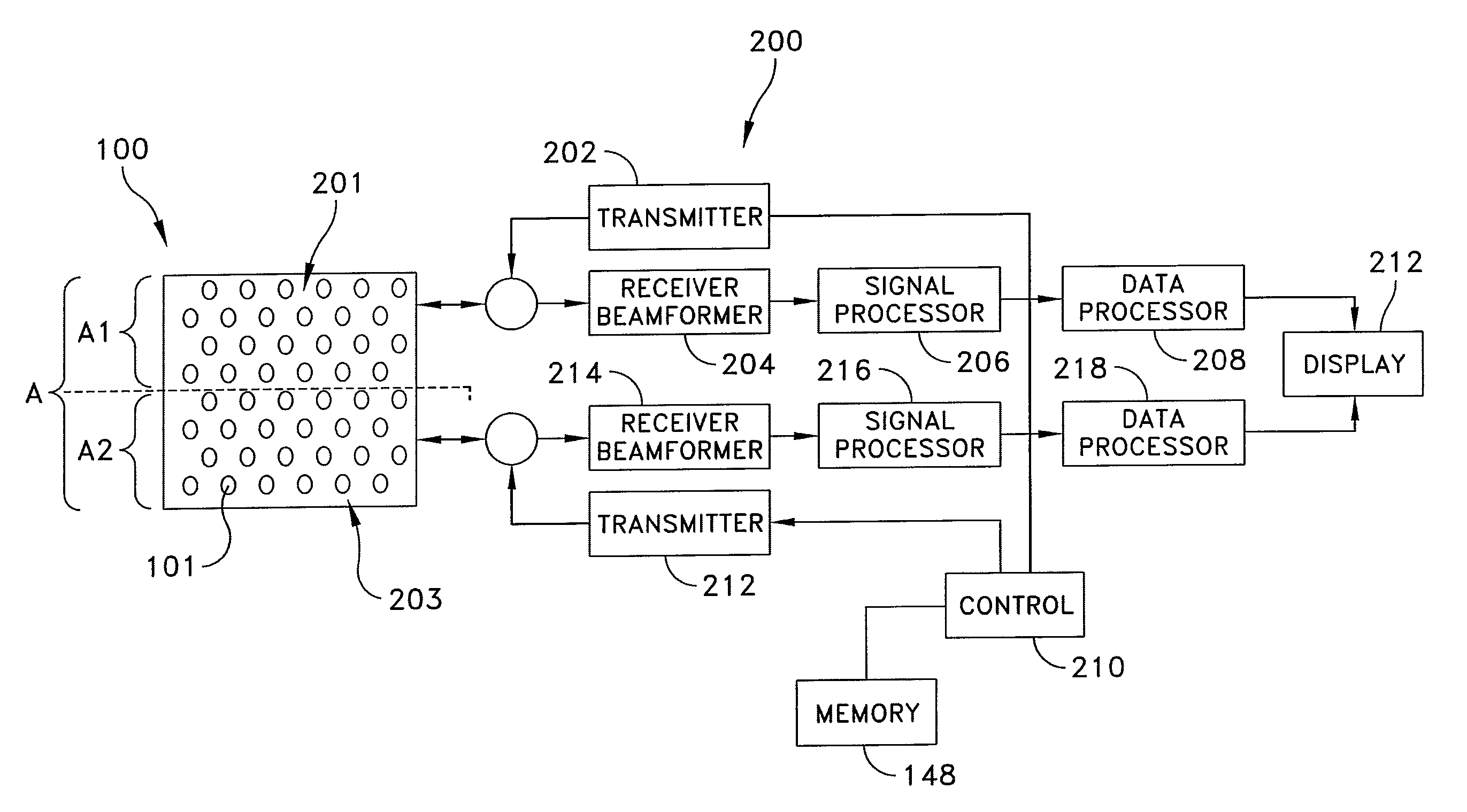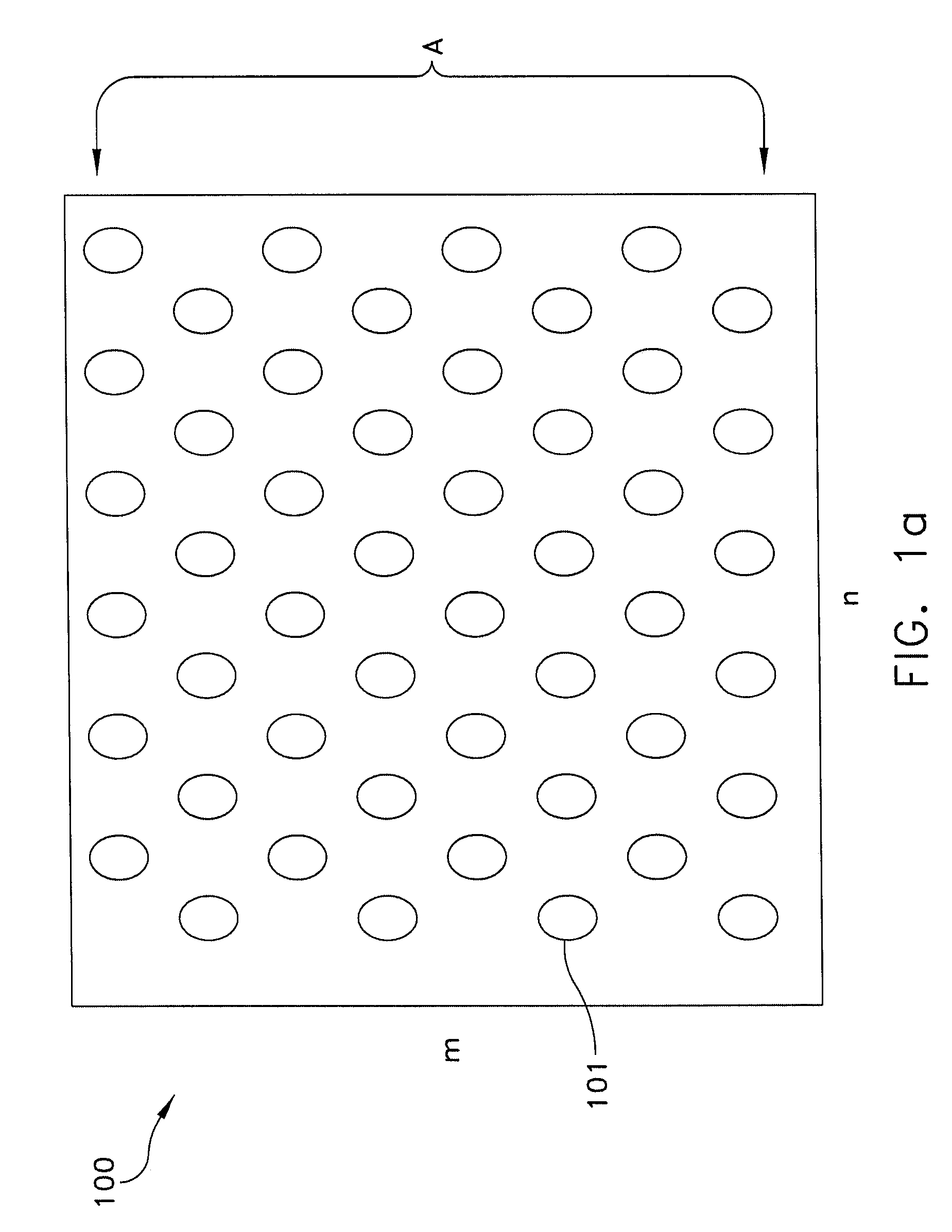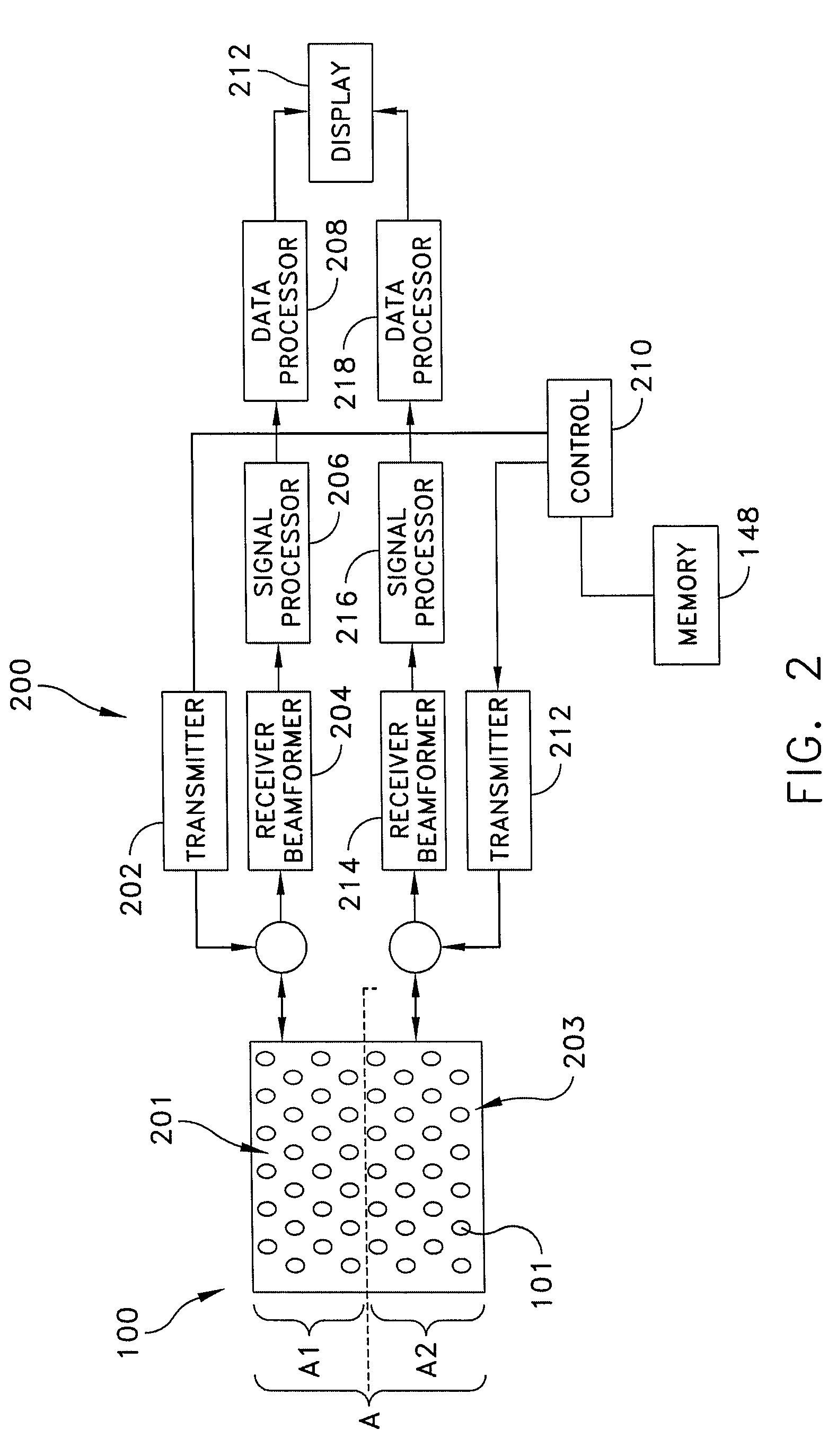Split aperture array for increased short range target coverage
a short-range target and aperture array technology, applied in the field ofradar systems, can solve the problems of significant limitations in the processing and implementation of conventional radar systems, and require much greater processing and response time, and achieve the effect of enhancing short-range target coverag
- Summary
- Abstract
- Description
- Claims
- Application Information
AI Technical Summary
Benefits of technology
Problems solved by technology
Method used
Image
Examples
Embodiment Construction
[0017]It is to be understood that the figures and descriptions of the present invention have been simplified to illustrate elements that are relevant for a clear understanding, while eliminating, for the purpose of clarity, many other elements found in radar systems and methods of making and using the same. Those of ordinary skill in the art may recognize that other elements and / or steps may be desirable in implementing the present invention. However, because such elements and steps are well known in the art, and because they do not facilitate a better understanding of the present invention, a discussion of such elements and steps is not provided herein.
[0018]Referring now to FIG. 1a, there is shown a front view of a phase array antenna system 100 having an aperture A shown by way of example and not limitation, and including a rectangular array of m×n antenna elements 101 arranged in rows and columns. The antenna elements are each associated with respective transmit / receive (T / R) mo...
PUM
 Login to View More
Login to View More Abstract
Description
Claims
Application Information
 Login to View More
Login to View More - R&D
- Intellectual Property
- Life Sciences
- Materials
- Tech Scout
- Unparalleled Data Quality
- Higher Quality Content
- 60% Fewer Hallucinations
Browse by: Latest US Patents, China's latest patents, Technical Efficacy Thesaurus, Application Domain, Technology Topic, Popular Technical Reports.
© 2025 PatSnap. All rights reserved.Legal|Privacy policy|Modern Slavery Act Transparency Statement|Sitemap|About US| Contact US: help@patsnap.com



